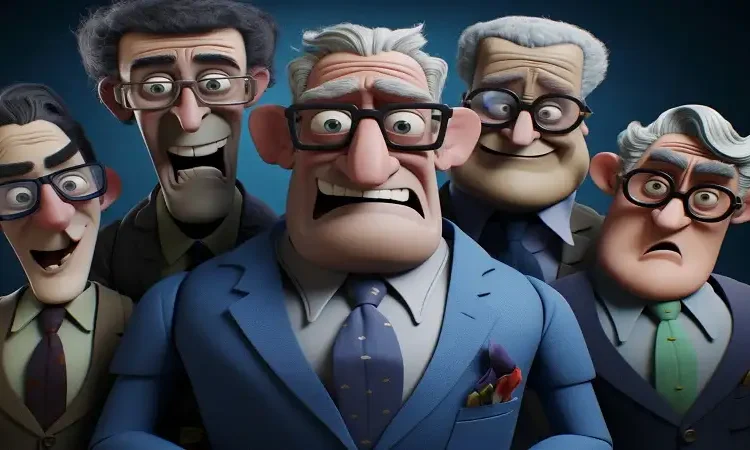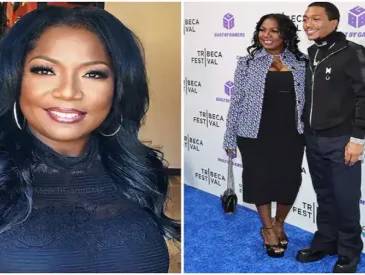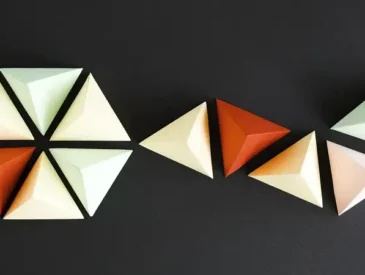In the vast universe of animation and pop culture, character design is crucial in defining a character’s identity and making it memorable. One of the unique design elements that has garnered attention over the years is the “big forehead” feature. This seemingly simple characteristic has been used creatively by artists to convey various traits and emotions. This article delves into some iconic big forehead characters across different media, exploring their significance and the role this distinctive feature plays in their popularity.
The Significance of Character Design
Before diving into specific characters, it’s essential to understand why certain design elements, like a big forehead, stand out. Character design is more than just aesthetics; it’s a visual shorthand that helps audiences quickly grasp who a character is. A big forehead can signify intelligence, innocence, or even otherworldliness. It can also make a character more endearing or relatable, drawing viewers into their story.
Iconic Big Forehead Characters
- Megamind (Megamind)
DreamWorks’ “Megamind” features one of the most memorable big forehead characters in recent animation history. Megamind, the titular character, is an alien with an enormous, bulbous head, which houses his equally enormous brain. This exaggerated feature underscores his super-intelligence and his struggle with self-identity and purpose. The design choice is not just for comedic effect but also to highlight his otherworldly origin and superior intellect, setting the stage for his complex personality.
- Arnold (Hey Arnold!)
Nickelodeon’s “Hey Arnold!” presents a more down-to-earth take on the big forehead trope. Arnold, with his football-shaped head, including a prominent forehead, is an ordinary kid with extraordinary empathy and problem-solving skills. His distinctive head shape, including the forehead, makes him instantly recognizable and has become a symbol of the show’s unique charm. Arnold’s big forehead serves as a visual metaphor for his open-mindedness and thoughtful nature.
- Stewie Griffin (Family Guy)
Stewie Griffin from “Family Guy” is another character whose large forehead plays a crucial role in his design. As a diabolical yet oddly lovable baby, Stewie’s oversized head, including the forehead, hints at his advanced intellect and cunning personality. This feature contrasts humorously with his baby body, emphasizing the absurdity of a baby plotting world domination. Stewie’s big forehead is integral to his identity, making him one of the most recognizable characters in adult animation.
- Jimmy Neutron (The Adventures of Jimmy Neutron: Boy Genius)
Jimmy Neutron is perhaps the quintessential example of a big forehead character symbolizing genius. As the boy genius of Retroville, Jimmy’s large forehead houses his extraordinary brainpower. His design reflects the classic image of a brainiac, with his head proportionally larger than the rest of his body. This not only makes him stand out visually but also reinforces his role as the smartest kid in town, always inventing gadgets and solving problems.
- Helga Pataki (Hey Arnold!)
Helga Pataki, another character from “Hey Arnold!”, also sports a notable forehead. Helga’s character is complex, balancing her tough exterior with a deep, often unrequited love for Arnold. Her large forehead, combined with her unibrow, gives her a unique and memorable look. This design choice sets her apart from other characters, making her instantly recognizable and emphasizing her bold, outspoken personality.
- Carl Fredricksen (Up)
In Pixar’s “Up,” Carl Fredricksen’s design features a big forehead, symbolizing wisdom and experience. As an elderly man embarking on an adventure to fulfill a lifelong dream, Carl’s forehead, along with his square-shaped head, accentuates his stern yet lovable nature. This design element underscores the depth of his character, highlighting the emotional journey he undertakes throughout the film.
- Meg Griffin (Family Guy)
Meg Griffin from “Family Guy” is another character with a noticeably large forehead. Unlike Stewie, Meg’s forehead doesn’t signify intelligence but rather serves as part of her overall awkward and often ridiculed appearance. This design choice adds to the humor and satire of the show, as Meg’s physical features are often exaggerated to reflect her social struggles and the family’s dynamic.
- Brain (Pinky and the Brain)
In the iconic show “Pinky and the Brain,” Brain is a genetically enhanced lab mouse with a disproportionately large head, particularly his forehead. This feature signifies his exceptional intelligence and grandiose plans for world domination. Brain’s big forehead contrasts with Pinky’s more normal appearance, emphasizing the difference in their intelligence levels and adding to the comedic dynamic of the duo.
The Psychological Impact of Big Forehead Characters
The consistent use of big foreheads in character design isn’t just about aesthetics. It taps into psychological perceptions and cultural associations. A large forehead can evoke thoughts of intelligence and wisdom, as seen in characters like Jimmy Neutron and Brain. In contrast, it can also enhance the comedic or endearing aspects of a character, as with Stewie Griffin and Carl Fredricksen.
Furthermore, big foreheads can make characters more relatable or sympathetic. They often appear in characters who, despite their unique appearance, face everyday challenges and emotions. This relatability can create a stronger emotional connection between the audience and the character, making their stories more engaging.
The Evolution of Big Forehead Characters
Over the years, the portrayal of big-f forehead characters has evolved. Early animations often used exaggerated features for purely comedic or satirical purposes. However, as storytelling in animation and media has become more nuanced, these characters have been given more depth and complexity.
Today’s big forehead characters are not just defined by their appearance but by their stories, personalities, and growth. They often challenge stereotypes and offer diverse representations of intelligence, strength, and vulnerability. This evolution reflects a broader trend in media towards more inclusive and multidimensional character portrayals.
Cultural Variations in Character Design
It’s also worth noting that the use of big foreheads in character design varies across cultures. In Western animation, this feature is often associated with intelligence or comedic effect. In contrast, some Eastern animations, particularly in anime, use big foreheads to convey youthfulness or innocence. Characters like Sailor Moon’s Usagi Tsukino often have larger foreheads, enhancing their youthful and endearing qualities.
These cultural variations highlight the versatility of the big forehead feature in character design. It can be adapted to fit different narrative needs and cultural contexts, making it a powerful tool for creators worldwide.
Conclusion: Celebrating Diversity in Character Design
Big forehead characters have made a significant impact on animation and pop culture. From the genius of Jimmy Neutron to the comedic charm of Stewie Griffin, these characters demonstrate the power of distinctive design in storytelling. Their large foreheads serve various purposes, from highlighting intelligence and experience to adding humor and relatability.
As character design continues to evolve, the use of unique features like big foreheads will undoubtedly persist, offering creators endless possibilities to craft memorable and beloved characters. Celebrating these diverse designs enriches our media landscape and ensures that stories resonate with audiences on multiple levels.
In the end, big forehead characters remind us that it’s often the unique and unexpected traits that make characters truly unforgettable. Whether they make us laugh, think, or feel, these characters hold a special place in the hearts of viewers, proving that great design is about more than just looks—it’s about creating a lasting impact. See More




